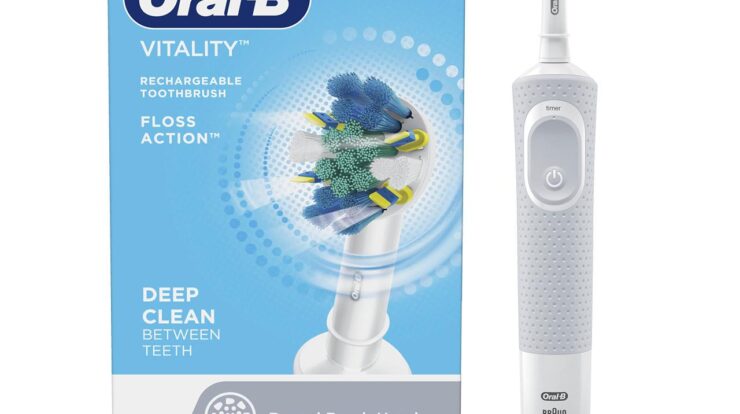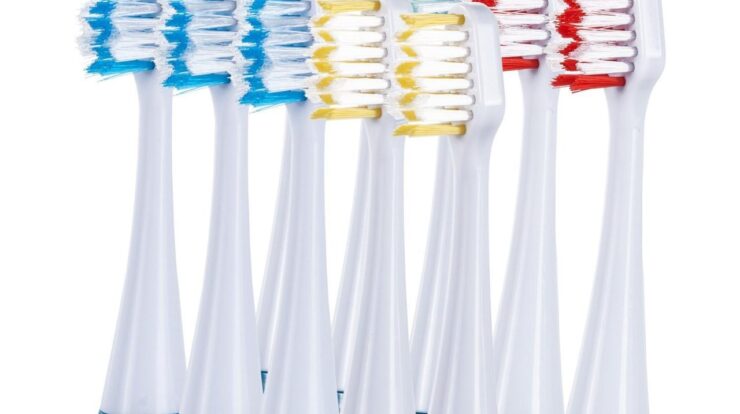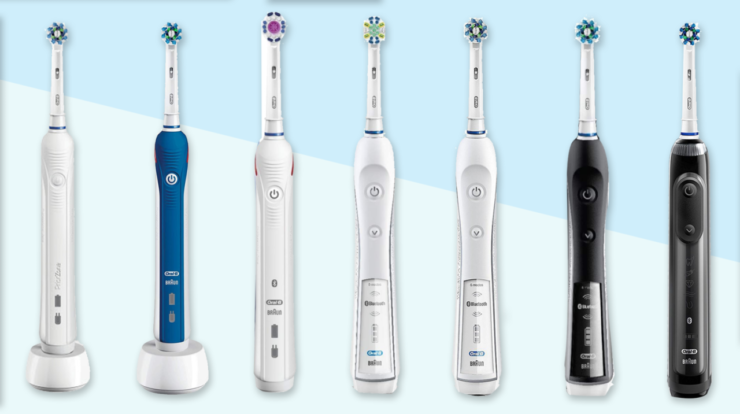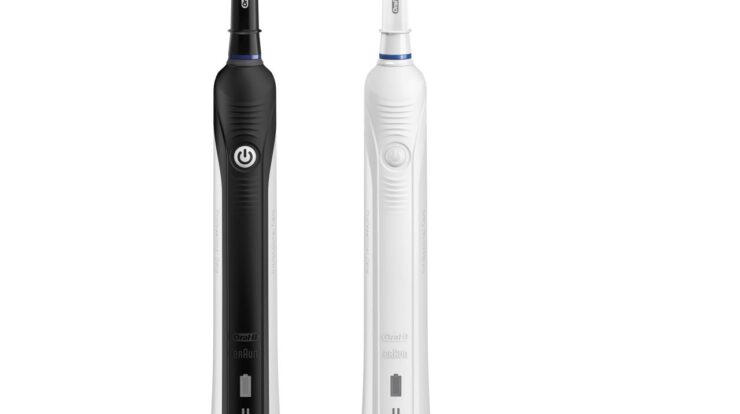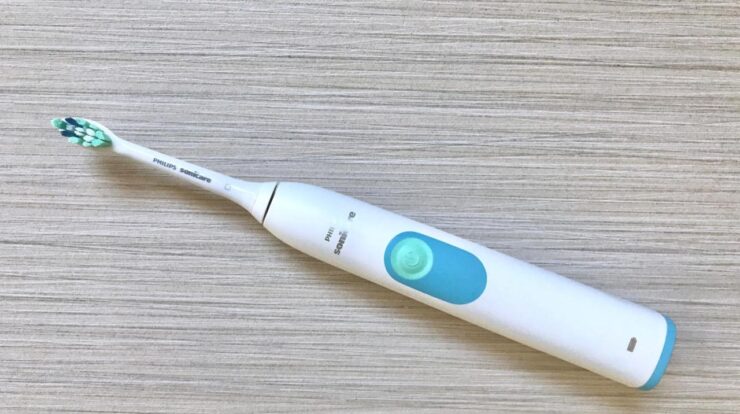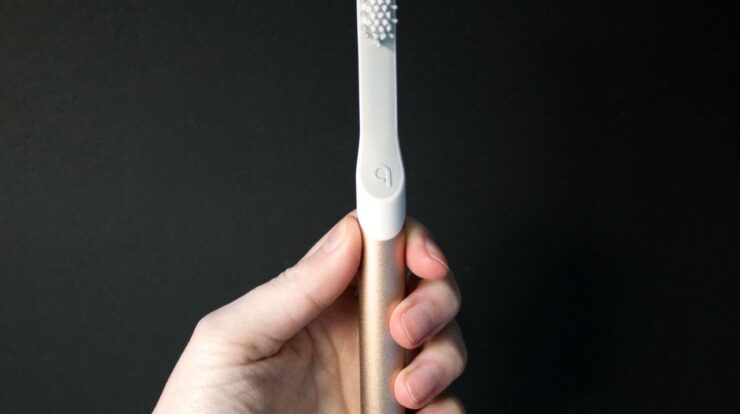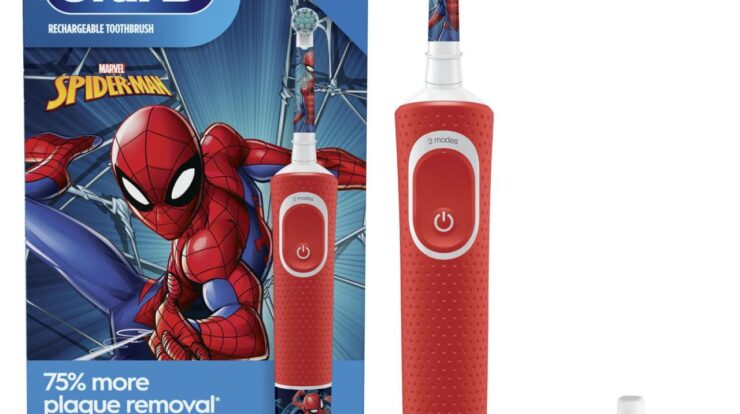What is the best electric toothbrush – Discover the best electric toothbrush for an exceptional oral hygiene experience! With a wide range of options available, finding the perfect match for your needs can be a breeze. Dive into our comprehensive guide and unveil the secrets to a radiant smile.
From understanding the different types of electric toothbrushes to exploring their unique features and benefits, this guide will equip you with the knowledge to make an informed decision. Let’s embark on a journey towards a brighter, healthier smile!
Types of Electric Toothbrushes
Electric toothbrushes have revolutionized oral hygiene, offering various options to suit different needs. Let’s explore the different types available.
Sonic Toothbrushes
Sonic toothbrushes use high-frequency vibrations to generate sonic waves. These waves create micro-bubbles that effectively remove plaque and bacteria from teeth and gums.
- Example:Philips Sonicare DiamondClean Smart
- Benefits:Gentle on teeth and gums, suitable for sensitive mouths
Ultrasonic Toothbrushes
Ultrasonic toothbrushes emit ultrasonic waves at even higher frequencies than sonic models. These waves create cavitation bubbles that burst and disintegrate plaque and tartar buildup.
- Example:Megasonex M8
- Benefits:Highly effective at removing plaque and stains, ideal for smokers or coffee drinkers
Rotating Toothbrushes
Rotating toothbrushes feature a rotating head that spins to remove plaque and debris. They are typically less expensive than sonic or ultrasonic models.
- Example:Oral-B Pro 1000
- Benefits:Easy to use, good for removing surface plaque
Features to Consider
Choosing the right electric toothbrush involves considering several key features that impact its performance and effectiveness. These features include brush head design, speed settings, timer functions, and charging capabilities.
The following table provides an overview of these features and their contributions to the overall brushing experience:
| Feature | Description | Contribution |
|---|---|---|
| Brush Head Design | Shape, size, and bristle type of the brush head | Determines the reach and effectiveness of cleaning different areas of the mouth |
| Speed Settings | Range of speeds available for brushing | Allows for customization based on individual preferences and gum sensitivity |
| Timer Functions | Built-in timers to ensure recommended brushing duration | Promotes consistent and thorough brushing habits |
| Charging Capabilities | Type of charging (e.g., USB, inductive) and battery life | Ensures convenience and uninterrupted brushing sessions |
Benefits of Electric Toothbrushes: What Is The Best Electric Toothbrush
Electric toothbrushes offer several advantages over manual toothbrushes, making them a worthwhile investment for maintaining optimal oral hygiene.
Electric toothbrushes are designed to remove plaque and bacteria more effectively than manual toothbrushes. They utilize oscillating, rotating, or sonic technology to generate high-frequency vibrations that dislodge plaque and bacteria from tooth surfaces and gum lines.
Improved Plaque and Bacteria Removal
- Studies have shown that electric toothbrushes can remove up to 50% more plaque than manual toothbrushes.
- A study published in the Journal of Clinical Periodontology found that electric toothbrushes were significantly more effective in reducing plaque and bleeding gums than manual toothbrushes.
Enhanced Gum Health
- Electric toothbrushes can help prevent and treat gum disease by effectively removing plaque and bacteria from the gum line.
- A study published in the Journal of Periodontology found that electric toothbrushes were more effective in reducing gum inflammation and bleeding than manual toothbrushes.
Reduced Risk of Cavities
- Electric toothbrushes can help prevent cavities by effectively removing plaque and bacteria from tooth surfaces.
- A study published in the Journal of the American Dental Association found that electric toothbrushes were more effective in reducing cavities than manual toothbrushes.
Usage and Maintenance
Electric toothbrushes offer an enhanced oral hygiene experience, but proper usage and maintenance are crucial to maximize their benefits. Here’s a comprehensive guide to using and maintaining an electric toothbrush effectively.
Choosing the Right Brush Head
Electric toothbrushes come with various brush heads designed for specific needs. Choose a brush head that matches the size and shape of your mouth, as well as your brushing habits and dental concerns. Consider the following factors:
- Size: Brush heads come in different sizes, from compact to large. Choose one that comfortably fits your mouth and allows you to reach all areas.
- Shape: Brush heads can have different shapes, such as round, oval, or diamond-shaped. Select one that contours to your teeth and gums for optimal cleaning.
- Bristle stiffness: Electric toothbrushes offer soft, medium, or firm bristles. Choose bristles that are soft enough to protect your gums but firm enough to effectively remove plaque.
- Special features: Some brush heads have special features, such as angled bristles or built-in tongue cleaners. Consider these features based on your individual needs.
Applying Toothpaste
Apply a pea-sized amount of toothpaste to the center of the brush head. Avoid overloading the brush, as this can create excessive foam and reduce cleaning efficiency.
Brushing Effectively
Hold the toothbrush at a 45-degree angle to your teeth and gums. Gently move the brush head in small, circular motions, applying light pressure. Focus on each tooth and gum line, spending about 2-3 seconds on each area.
Brush for a total of 2 minutes, as recommended by dental professionals. Most electric toothbrushes have a built-in timer or indicator to help you track your brushing time.
Importance of Regular Maintenance
Regular maintenance is essential to ensure the effectiveness and longevity of your electric toothbrush. Here are some important maintenance tips:
- Rinse the brush head thoroughly after each use to remove toothpaste and debris.
- Replace the brush head every 3-4 months or sooner if the bristles become frayed or worn.
- Clean the toothbrush base regularly by wiping it down with a damp cloth.
- Store the toothbrush upright in a well-ventilated area to prevent bacteria growth.
- Follow the manufacturer’s instructions for charging and replacing batteries or rechargeable power sources.
Comparison with Manual Toothbrushes
Electric toothbrushes and manual toothbrushes offer distinct advantages and disadvantages. Understanding these differences can help you make an informed decision based on your individual needs and preferences.
Cleaning Efficacy
Electric toothbrushes generally offer superior cleaning efficacy compared to manual toothbrushes. Their rotating or oscillating heads effectively remove plaque and bacteria from teeth and gums, reaching areas that manual toothbrushes may miss.
- Electric toothbrushes have built-in timers, ensuring optimal brushing time.
- Many models feature pressure sensors that prevent excessive force, reducing the risk of damage to teeth and gums.
Convenience
Electric toothbrushes offer greater convenience than manual toothbrushes. They require less effort and time to use, making them ideal for individuals with limited dexterity or busy schedules.
If you’re looking for a way to add warmth and ambiance to your home without the hassle of a traditional fireplace, consider electric fireplace inserts . These inserts fit into your existing fireplace and provide realistic flames and heat, without the need for wood or gas.
- Electric toothbrushes are often equipped with rechargeable batteries, eliminating the need for frequent battery replacements.
- Some models come with travel cases, making them portable for trips.
Cost
Electric toothbrushes typically have a higher initial cost than manual toothbrushes. However, they may offer long-term savings due to their durability and reduced need for dental treatments.
If you’re looking to upgrade your home’s ambiance without the hassle of a traditional fireplace, consider installing electric fireplace inserts . These modern devices provide the cozy ambiance of a real fire without the mess or maintenance. And if your kitchen knives are feeling dull, don’t despair! Find a kitchen knife sharpener near me to restore their sharpness and make cooking a breeze again.
- Electric toothbrushes may require replacement heads periodically, adding to the overall cost.
- The long-term savings potential of electric toothbrushes depends on factors such as frequency of use and dental health.
Additional Features
Some electric toothbrushes offer additional features that enhance their functionality and user experience:
- Built-in Bluetooth connectivity allows users to track their brushing habits and receive personalized feedback.
- Advanced models may have multiple brushing modes, such as sensitive, whitening, or deep cleaning.
- Some toothbrushes feature tongue cleaners or UV sanitizers for improved oral hygiene.
Choosing the Best Electric Toothbrush

Selecting the ideal electric toothbrush depends on individual preferences, oral health conditions, and budget. Consider the following factors:
Personal Preferences
- Size and weight:Choose a toothbrush that is comfortable to hold and maneuver.
- Handle design:Opt for a handle with a non-slip grip and ergonomic shape.
- Brush head size:Smaller brush heads are suitable for smaller mouths or hard-to-reach areas.
Oral Health Conditions
For specific oral health needs, consider:
- Sensitive teeth:Look for toothbrushes with soft bristles and pressure sensors to prevent discomfort.
- Gum disease:Choose toothbrushes with oscillating or sonic technology to gently massage gums.
- Orthodontic work:Select toothbrushes with special brush heads designed for braces or retainers.
Budget
Electric toothbrushes range in price. Determine your budget and choose a toothbrush that meets your needs within that range.
Recommendations, What is the best electric toothbrush
Based on these criteria, here are some recommended electric toothbrushes:
- Best overall:Oral-B iO Series 9
- Best for sensitive teeth:Philips Sonicare ProtectiveClean 4500
- Best for gum disease:Waterpik Sonic-Fusion 2.0
- Best for budget:Colgate ProClinical 150
Conclusion
Choosing the best electric toothbrush empowers you to transform your oral hygiene routine. By considering your individual needs and preferences, you can find the perfect companion for a sparkling smile. Embrace the latest advancements in dental technology and elevate your brushing experience to new heights.
Invest in a brighter, healthier smile today!
Frequently Asked Questions
What are the different types of electric toothbrushes?
Electric toothbrushes come in various types, including sonic, ultrasonic, and rotating models. Sonic toothbrushes vibrate at high speeds, while ultrasonic toothbrushes use sound waves to clean teeth. Rotating toothbrushes have a rotating head that moves in a circular motion.
What features should I consider when choosing an electric toothbrush?
Key features to consider include brush head design, speed settings, timer functions, and charging capabilities. These features impact the overall performance and effectiveness of the toothbrush.
How do electric toothbrushes benefit oral hygiene?
Electric toothbrushes offer several benefits over manual toothbrushes, including improved plaque and bacteria removal, enhanced gum health, and reduced risk of cavities.
